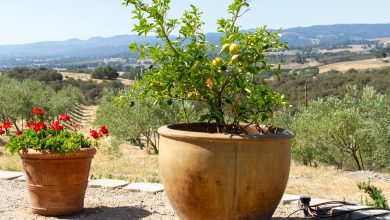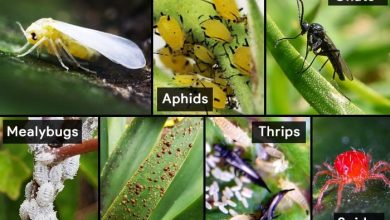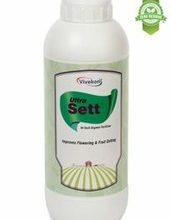How to plant yam


There are hundreds of species in the genus Dioscorea , of which several species are planted to obtain edible tubers or to obtain phytochemicals for the pharmaceutical industry. The most cultivated species for use as food are:
Dioscorea rotundata of tubers with white flesh and Dioscorea cayenensis of tubers with yellow flesh or light cream, native to West Africa. They are considered two species separated by some taxonomists and considered as a single species by others. They are the most cultivated yams in the world, mainly in Nigeria, which is the world’s largest producer of yams. Its tubers are approximately cylindrical, with brown outer skin, and weighing from 2 kg to 5 kg, but can reach 26 kg. There are more than two hundred cultivars of these species.

Dioscorea alata – tubers with generally white pulp, but with light cream and purple cultivars. Native to Southeast Asia, this is the yam with the greatest geographical distribution of planting. Your tuber usually weighs between 5 kg and 10 kg, but can weigh up to 60 kg.

Dioscorea bulbifera – known as air yam, as it is grown mainly to obtain aerial tubers that appear in the leaf axils, and that weigh from 0.5 kg to 1.2 kg (other species of Dioscorea also produce tubers in leaf armpits, but these are generally not as appreciated and are not the size of the aerial tubers of Dioscorea bulbifera ). The plant also produces an underground tuber. There are cultivated varieties, which are used in food when cooked or roasted, and wild varieties, which can be toxic.

Dioscorea trifida – native to South America, produces smaller tubers, 15 to 20 cm long, irregularly shaped and with white, cream, pink or purple flesh. Some popular names of cultivars of this yam are sweet and yam.

Dioscorea opposita , with synonyms Dioscorea polystachya , Dioscorea potatoes and Dioscorea oppositifolia – native to China, is grown mainly in China, Korea, Japan, Vietnam and the Philippines. Chinese yam has white pulp and can be eaten raw after being immersed in a solution of water and vinegar.

Dioscorea esculenta – native to Southeast Asia (Indochina), its tuber is small, oval, up to 20 cm long and 6 to 8 cm in diameter, generally weighing 250 g to 1 kg. Each plant produces several tubers (5 to 20).
Dioscorea dumetorum – native to West Africa, produces one or more tubers of white or yellowish flesh, with a bitter taste. For use in food, your tubers need to be cut and soaked in water, and then they need to be cooked well. Wild plants of this species are very toxic.
Some of the above species and other Dioscorea species can be grown to obtain steroidal sapogenins, which are phytochemicals used in the pharmaceutical industry for the production of steroid hormones (progesterone and cortisone, for example).
Climate
Most yam species are plants with a hot and humid climate, but some species survive well in mild weather and can withstand even light frosts.
Species of hot and humid climate: D. rotundata , Dioscorea cayenensis , Dioscorea alata , Dioscorea bulbifera , Dioscorea trifida , Dioscorea esculenta , Dioscorea dumetorum .
Kind of mild climate: Dioscorea opposita .
Yam is usually planted at the beginning of the rainy season in warm regions and in early spring in cold winter regions.
Brightness
The yam needs direct sunlight for at least a few hours daily. Some species tolerate growing in shade, but productivity may be lower.
Ground
Cultivate in well-drained, light, deep, fertile soil and rich in organic matter. Compacted soils should be avoided, as they hamper the formation of tubers.
Irrigation
Irrigate in order to keep the soil always moist, without being soaked. Yam is resistant to drought, but does not grow well when water is lacking.
Planting
Planting is done with small tubers that appear close to the main tuber in some species of yam, whole tubers and pieces of tubers (the tuber is usually divided into three parts). In the species that generate aerial tubers in the leaf axils, these can be used for planting. Yams can also be grown from seeds, although this is less common. Cultivars of some species rarely flower and produce seeds when grown outside their place of origin.
The most recommended is the planting of the tubers in earth mounds (high pits or matumbos) and in ridges, although they can also be planted on flat ground. The recommended spacing between the plants varies greatly with the species, cultivar, region and planting method, generally ranging from 0.6 mx 0.6 m to 1.25 mx 1 m.

Cultivation
Yam is a climbing plant with vigorous growth. It is possible to place 1.2 m sticks over 2.5 m in height for plant staking, which gives the best results in productivity, but it is also possible not to use any staking, allowing the plants to grow creepers on the ground.
Remove invasive plants that are competing for nutrients and resources in the first four months of cultivation.
Several plants of the genus Dioscorea , including some cultivated species, are invasive plants that can dominate extensive areas, even covering large trees.

Harvest
Yam harvesting usually takes place 5 to 12 months after planting. Harvesting can also take place relatively sooner in cold winter regions and later in warm regions.
Tubers should be carefully dug up, without injury to them, thus allowing storage for a longer period of time (a few months).



![Photo of The Best Electric Brushcutter: [Our Pick]](https://www.complete-gardening.com/wp-content/uploads/2022/08/the-best-electric-brushcutter-our-pick-390x220.jpg)
